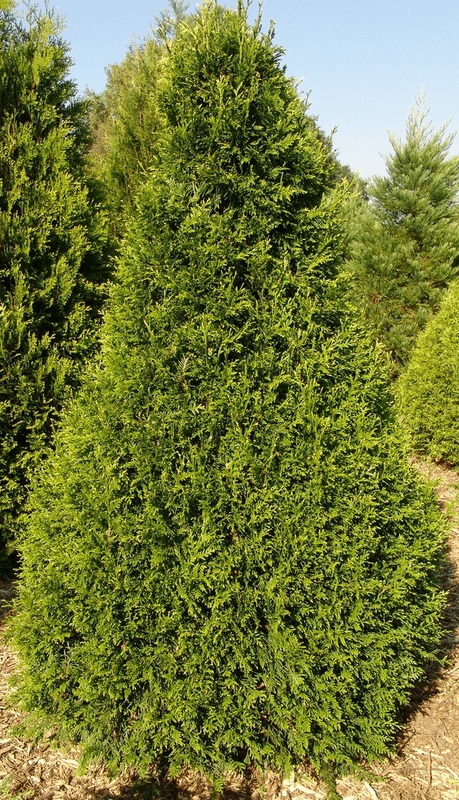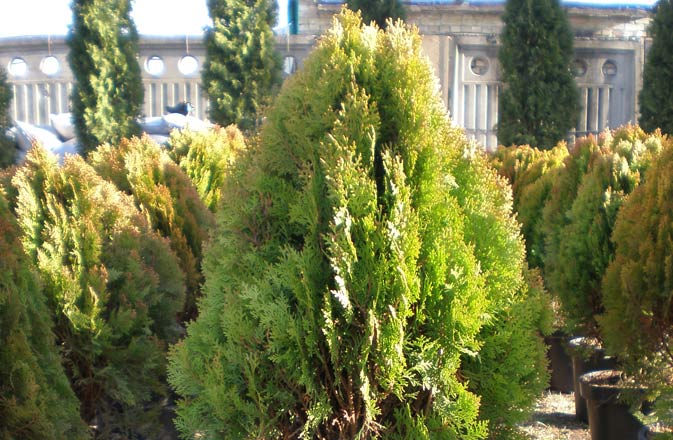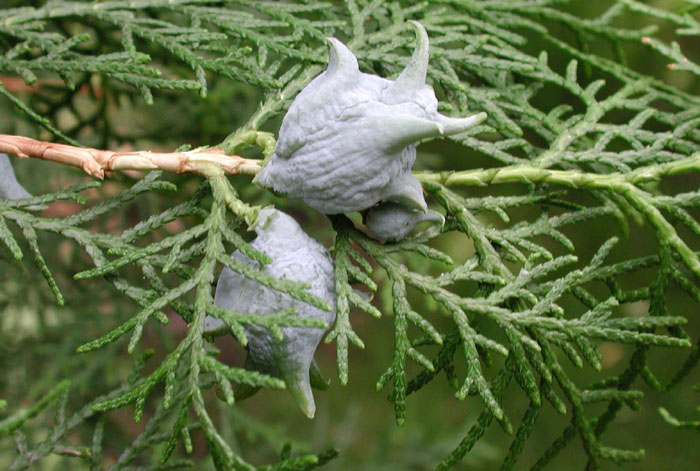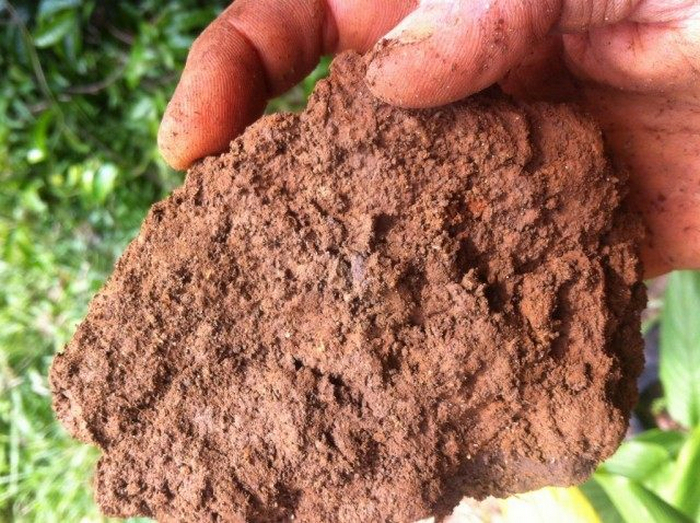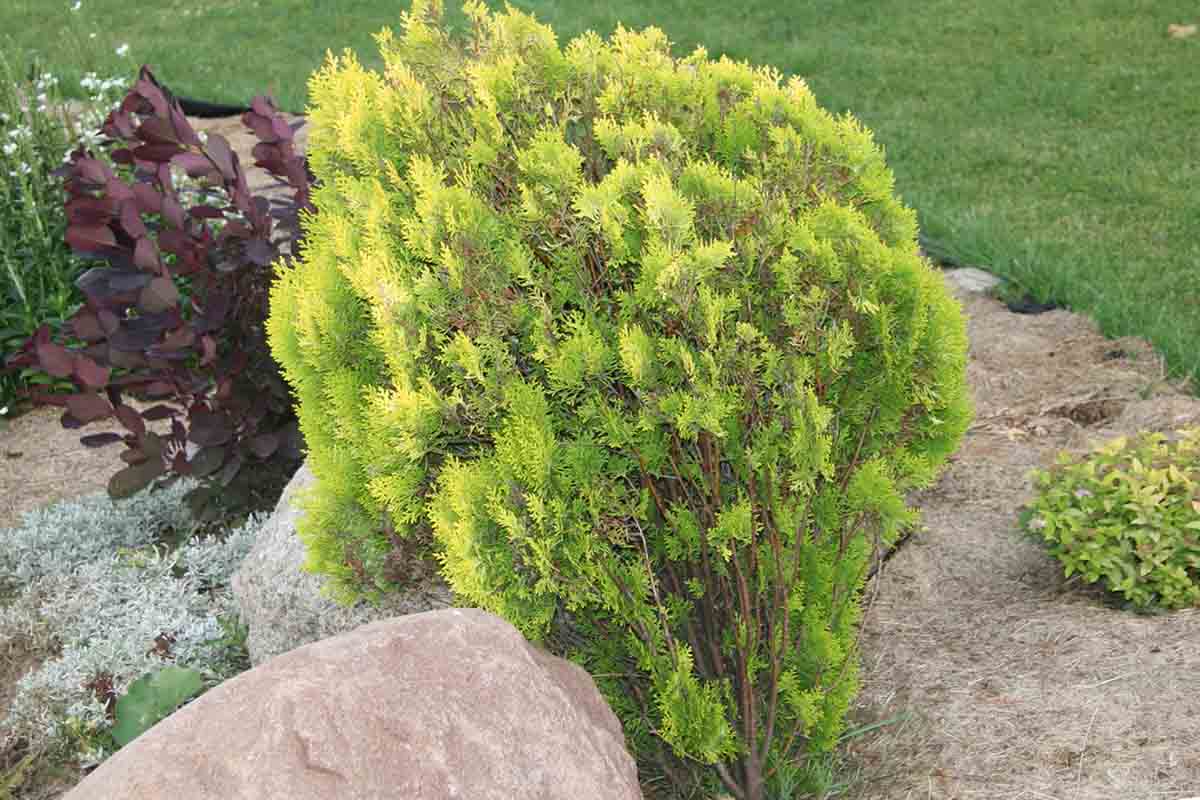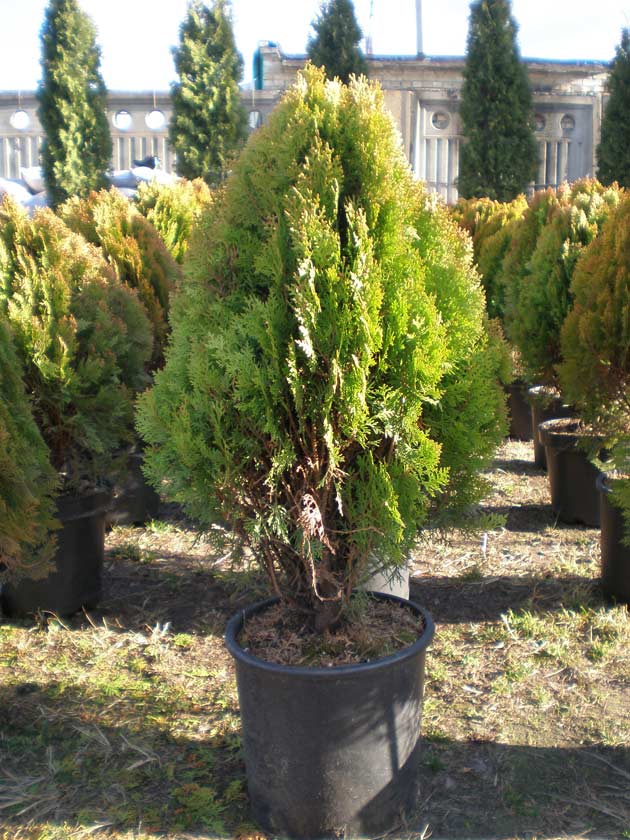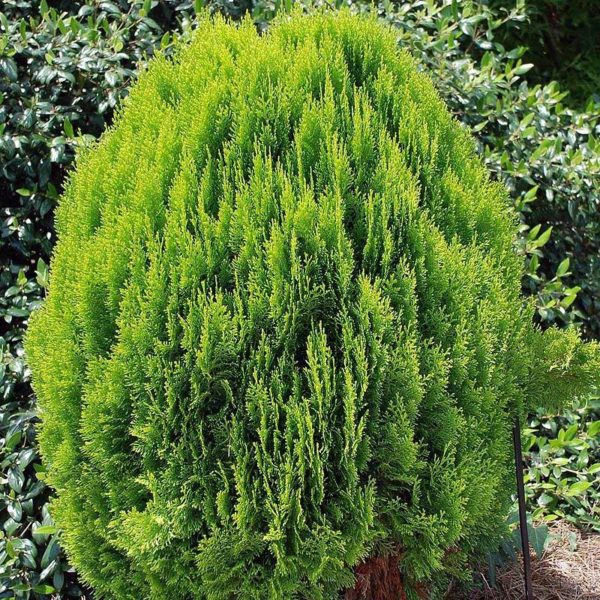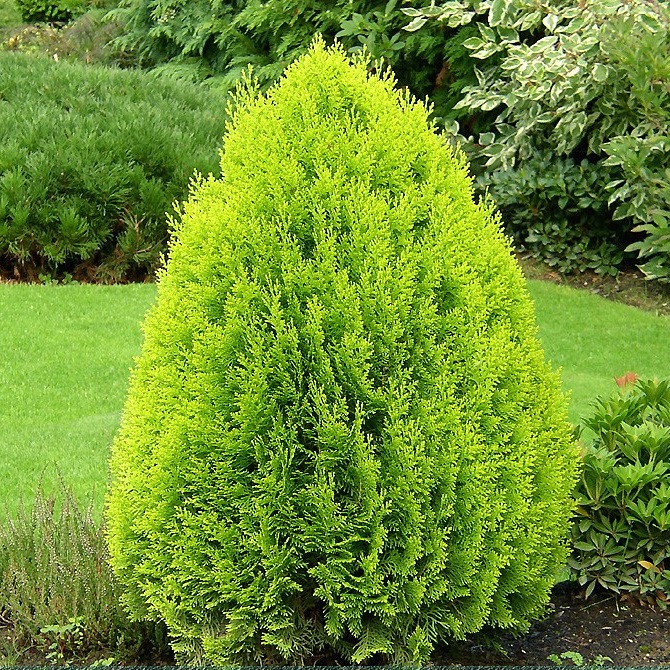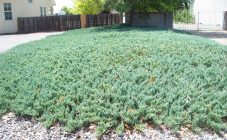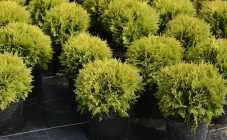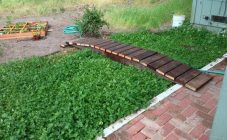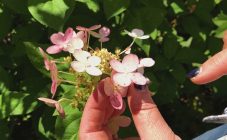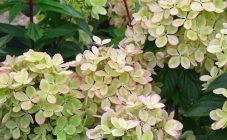Content:
Ornamental trees and shrubs are often used in the design of suburban areas. One of the most popular conifers is thuja.
Description of culture
The plant belongs to the evergreen trees of the Cypress family.
Types of decorative thuja:
- western;
- eastern;
- folded;
- Japanese;
- Korean.
Western
The homeland of the western thuja is North America. This is the most common type in landscape design. After transplanting, seedlings take root well in a new place. Tolerates light shade, but develops better in sunny areas. Under natural conditions, it grows on moist clay soils. The tree is unpretentious in care, decorative, frost-resistant.
Japanese
The second name of the plant is Standish. It grows naturally in the highlands of Japan. It is very demanding on the cleanliness of the surrounding air, therefore it practically does not take root in cities. It tolerates low temperatures well. The upper part of the branches is green and the lower part is white.
Korean
Unlike other species, it belongs to shrubs. Does not tolerate cold. This type of thuja is distinguished by a spreading wide crown. The needles are soft, two-colored. The outside is green and the underside is silver.
Folded
Highest of all types. Reaches a height of 70 m, while the trunk diameter can reach 2 m. The decorative thuja varieties of this species are more miniature.
Eastern
In the literature, thuja biota, platyclad or platycladus are called differently. The plant grows in countries with warm temperate climates and mild winters. Under natural conditions, it can be found on the heights of China, therefore it can be called Chinese thuja. Most often it grows singly or in small groups on rocky areas or stony soils. It can rightfully be considered a rock thuja.
The tree usually reaches 10 m in height, although specimens up to 18 m in height exist. The size of the crown is up to 11 m in diameter.
The bark of the tree is light brown. The bark of the twigs is yellowish red.
The form of the shoots is flat, wide, with numerous branching, which is where the name "flattened" came from. The branches are located around the trunk and directed upwards.
The needles are scaly or needle-like, firmly pressed to the branches. They live about 3-5 years. Their size reaches 3 mm in diameter. The color of the needles depends on the season: in summer - light yellow or light green, and closer to winter - reddish brown.
Oriental thuja with blue or greenish cones, the size of which reaches 1.5 cm (male) and 2-3 cm (female), look beautiful in summer. After ripening, they become dry and brown in color. The seeds in the cones are similar in shape to the grain. In mid-fall, the buds open and the seeds fall on the ground.
Most of the roots are located in the surface layers, but there are several main deep roots.
Thuja is a long-lived tree. In China, there are specimens that were planted about 1000 years ago. In cultural plantings, its age can reach 200 years.
The flat plant is a shade-tolerant plant, but it develops better in sunny open areas. In the shade, the crown develops well on loamy and sandy loam soils. It can grow on not very fertile soils.Does not like dense and waterlogged soils. The soil can be both slightly acidic and highly alkaline. Transplant easily.
Landing
Planting should be done in spring, early summer or fall. During this period, the highest survival rate of seedlings is observed. It is recommended to deepen the root collar when planting, as this will give an additional growth of the root system.
After planting, it is imperative to carry out abundant watering. It is also recommended to water the seedling periodically once a week for the first two months.
Care
Care in the warm season for the plant consists in periodic watering. If the summer is hot enough, then sprinkling of the crown can be carried out in the morning or evening.
In the warm season, you need to mulch the soil and remove weeds in the trunk circle.
In the spring, you can feed with nitrogen fertilizers, in the summer - with phosphorus, in the fall - with potash.
Propagated by seeds and cuttings.
In the process of growth, the ephedra releases phytoncides into the ambient air, therefore it is advantageous to plant it near the house.
Landscaping promotes thuja to a leading position among conifers when organizing hedges, decorating alleys, park paths, rockeries, etc. She tolerates molding well.
The nature of the flattened wood allows it to be used in furniture production, as well as for the manufacture of windows, doors, stairs, etc. It is soft, beautiful, with a delicate pine aroma. In industry, a distinction is made between dark and light.
Characteristics of the eastern thuja varieties
How can you determine the variety of thuja you like? Depending on the variety, flatheads have a different crown shape, color of needles and bark, physical size, etc. Currently, breeders have bred about 60 varieties. The color of the crown can vary from golden to blue.
Thuja eastern Aurea
This is a very beautiful decorative variety. It grows rather slowly. For a year, its growth is only 0.08-0.1 m.
Thuja eastern Aurea Nana is a dwarf variety of thuja Aurea. The leaves of the thuja eastern Aurea Nana have a golden hue.
The composition and fertility of the soil is not demanding. It does not tolerate severe frosts, so young trees require shelter for the winter. For planting, it is best to choose elevated places that are closed from drafts.
Thuja eastern Aurea, in contrast to thuja western Aurea, is less frost-resistant, has a denser crown and less annual growth. Its branches create a special ribbing.
Thuja eastern Yustinka
Biota of Polish selection. Its crown has a columnar shape. Like thuja Aurea, Nana belongs to dwarf varieties, however, unlike her, it has a slightly larger annual growth - 0.1-0.11 m.
The forming branches are oriented vertically upward. The rest of the branches are fan-shaped and located in a vertical plane.
The color of the needles is dark green.
Thuja Yustinka is a more frost-resistant variety than Aurea.
Thuja eastern Morgan
The variety is bred by Australian breeders. Unlike the previous varieties, the color of the needles in spring and summer is emerald green, lemon-green or salad green. In winter, the color changes to a bronze-red with an orange tint.
The crown has a pyramidal shape, pointed upwards, it is dense, practically does not require molding.
It grows very slowly. The annual growth is only 0.05-0.07 m.In adulthood, it reaches a height of 140-150 cm.At the same time, the crown width is up to 0.9 m.
Poorly tolerates low temperatures, so in winter it needs shelter. Drought tolerant.
Thuja eastern Platicladus
The crown has a conical shape. In rockeries it can be grown as a large bright green bush. It grows slowly. For a year, its growth reaches 15 cm.
Fan-shaped branches are tightly pressed to the trunk, have an upward direction. This variety of thuja develops better in sunny areas or in light partial shade.
Thuja eastern Pyramidalis
The shrub has a narrowly columnar shape. An adult plant reaches a height of up to 4 m, while the crown width can vary from 0.8 to 1.5 m. It grows rather slowly. Shoots grow no more than 10 cm per year.
Shade-tolerant. It tolerates low temperatures well. However, in early spring, young thujas may experience sunburn. Therefore, during this period they are shaded with agrofibre. The cover is removed after the soil around the shrub has thawed.
In the variety of thuja Pyramidalis Aurea, the needles are intensely yellow. Moreover, the color does not change, depending on the season.
Thuja eastern Golden Minaret
Another variety of yellow-colored flatfish is Golden Minaret.
It reaches 3-4 meters in height, crown width - 1-1.5 m. If the plant is planted in partial shade, then the golden-yellow color of the needles changes to green. Frost resistance is normal, but requires protected from drafts.
To create comfortable conditions, it is advisable to mulch the trunk circle. Peat or tree bark is used as mulch.
The use of thuja eastern in the design of the local area will create a unique design of the courtyard, as well as cleanse the surrounding air from microbes.

